Text
Something so profoundly fucked up between the inverse ratio of shrinking middle class and ever increasing aggression of advertisement
82K notes
·
View notes
Text
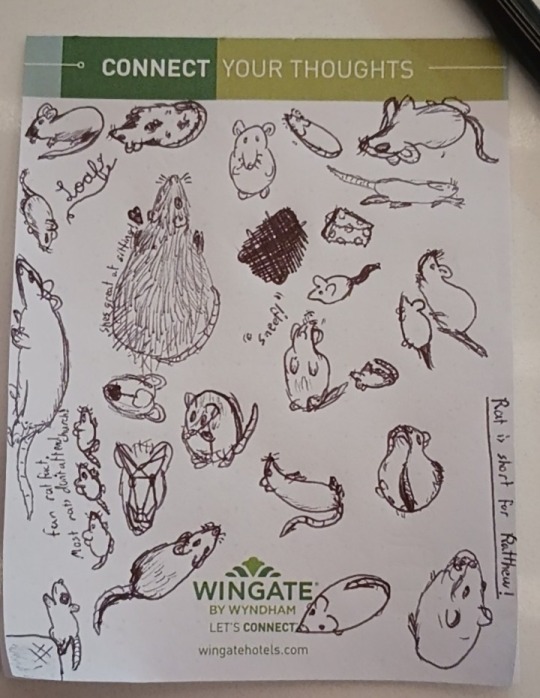
Winifred inspired me to make a rat doodle page on an old notepad.
She is finally here and so it has been decided…
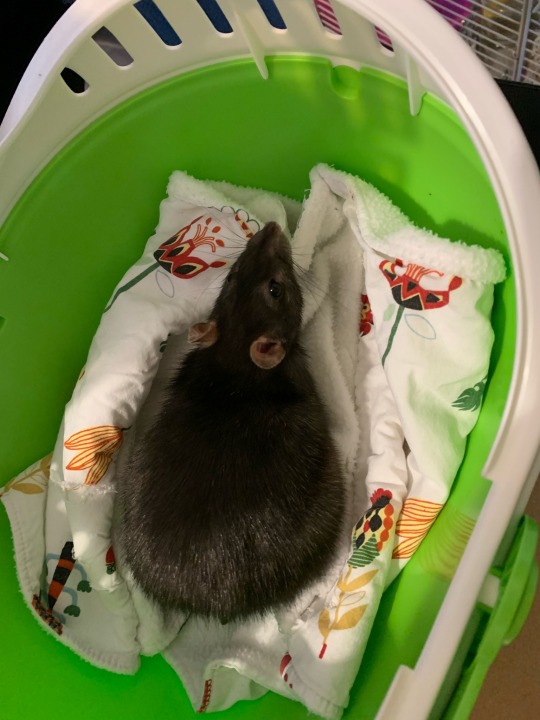
Winifred it is
127 notes
·
View notes
Text

Funeral Bells
Found & photographed: on an appalachian trail in West Virginia
Aptly named, eating this mushroom will have your loved ones hearing funeral bells in under a week.
See more photos, and learn about funeral bells below the cut!
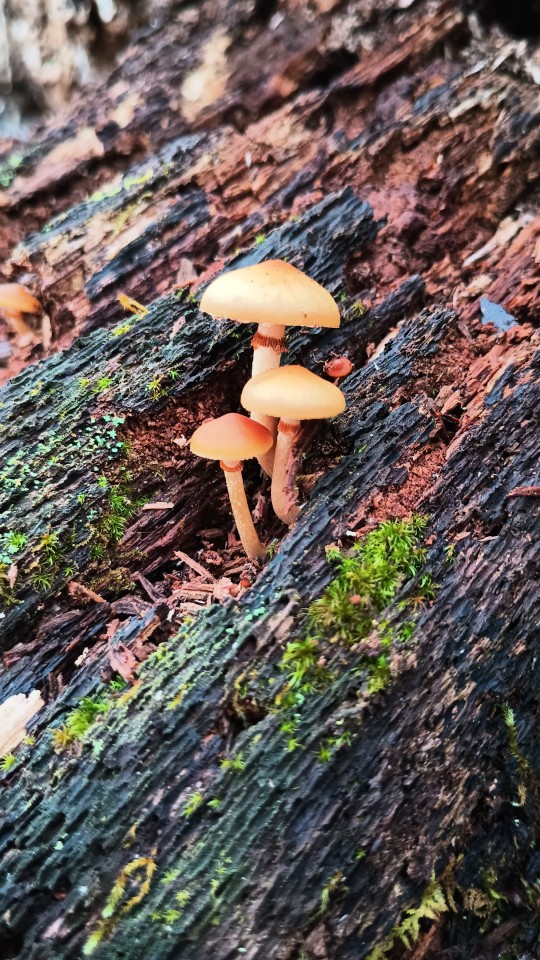

These mushrooms are beautiful to look at. And kind of safe to touch (I mean I carried them around to identify at home and I'm still alive) but never eat them, and if you touch them, don't touch your face.
Causing vomiting, and diarrhea, within 9 hours of ingestion, followed by liver failure, then kidney failure, and finally death, if you haven't died already. There are treatments if you get to a hospital within the first 12 hours, usually.
These little ones are something to keep an eye out for because they closely resemble edible and psychedelic mushrooms.
Quick tip, most psychedelic mushrooms bruise blue, but not all mushrooms that bruise blue are psychedelic.
Remember, never ingest a mushroom without 100% identifying trait confirmation, spore print, or professional ID.
Edibility: Deadly (kills in under 7 days)
Rarity: common on Conifers
Genus: Galerina
Regions: Europe, and Eastern North America
Please do your own research, I am an enthusiast not a scientist. I'm here to share and have fun.
All photos taken by me: Toast Loafley/Juno S.
#mushrooms#nature photography#fungi#nature#wild fungi#mushroom identification#photography#funeral bells#death#goth#poisonous#naturecore#toastloafley
0 notes
Text
Funeral Bells, I couldn't just choose one photo!
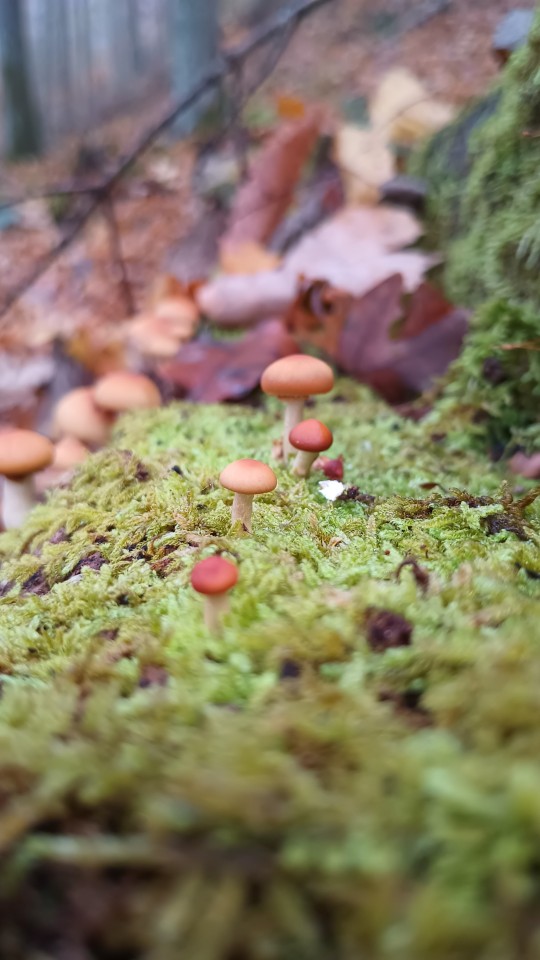


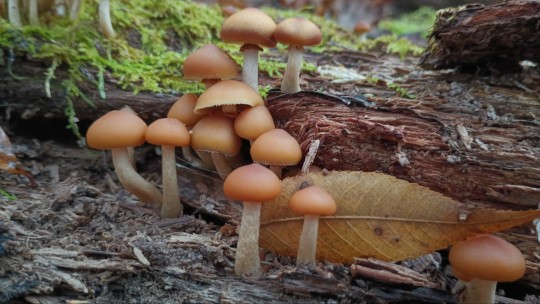

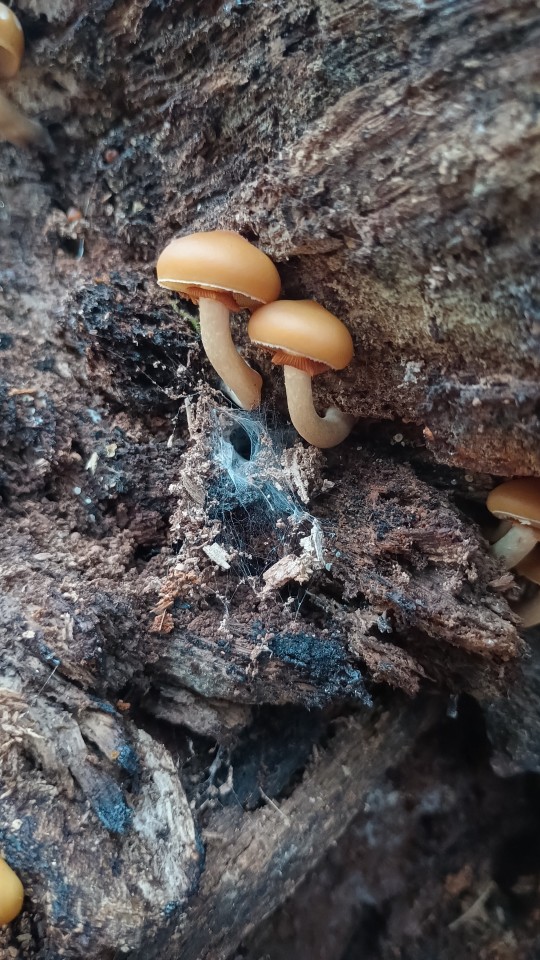
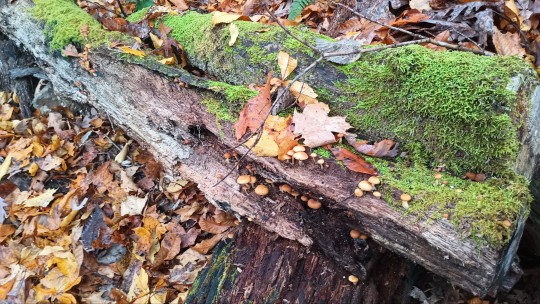
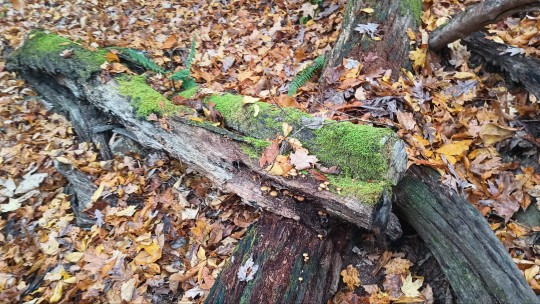
All photos by me: Toast Loafley/Juno S.
I will be making an in depth post about them later.
#mushrooms#nature photography#fungi#nature#wild fungi#mushroom identification#photography#poison#poisonous#funeral bells#toastloafley
1 note
·
View note
Text
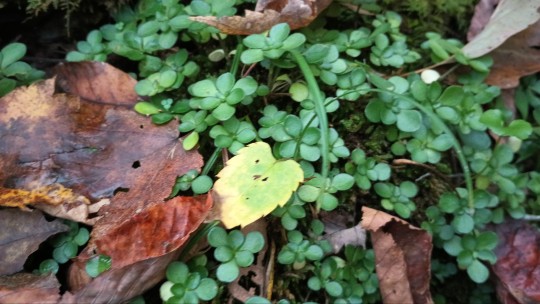
Woodland Stonecrop
Found and photographed: on an appalachian mountain biking trail in West Virginia
A pretty snack in your backyard? Low maintenance and beautiful, this succulent is the full package.
See more photos, and learn about Woodland Stonecrops below the cut!


You can eat it, use it on injuries, and it's local!
Named Stonecrop because of its ability to thrive atop boulders. This resilient plant survives in low sunlight and shallow soil by using its succulent leaves to retain water for long periods of time.
This could make a great low maintenance addition to your garden! It even flowers white April-May.
Medicinally, it can be used like aloe, leaves broken open and spread the gel inside on warts, insect bites, or burns to help soothe pain. It has even been said to have a cooling effect.
Cooking! This is my first edible plant, I hope you're excited to learn!
All parts of the Stonecrop plants are edibles from flowers to roots.
The leaves have been said to be edible raw, like in a salad, or you could cook them as pot herbs.
The roots of Stonecrop plants have been said to have a peppery, bitter taste, a good addition to spice up a dish! The roots are best harvested before the plant flowers, as the texture after flowering is unpleasant.
Edibility: Edible! All parts
Rarity: Common
Genus: Sedum
Regions: Eastern North America, from Arkansas to the East Coast.
Please do your own research, I am an enthusiast not a scientist. I'm here to share and have fun.
All photos taken by me: Toast Loafley/Juno S.
#nature#nature photography#succulents#medicinal plants#plants#plantblr#gardening#foraging#plant identification#ToastLoafley
13 notes
·
View notes
Text
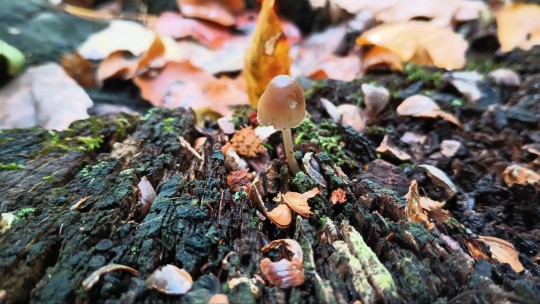
Honestly I couldn't begin to tell you what this mushroom might be, theres too many that look like it and I wasn't willing to cut its life short for identification.
I feel like it's one of my better photos, so I hope you like it!
Photo by me: Toast Loafley/Juno S.
3 notes
·
View notes
Text

Found and Photographed at a Fungi Festival in Ohio.
ID by: me, as Dusky Slug
Our little boneless friend here must have also been on the hunt for some mushrooms to snack on.
Learn more about Dusky Slugs below the cut!
These slugs live comfortably in wet places, and can be found anywhere from your backyard garden to deep in the forest. Our slimy little friends are always on the hunt for their next meal. Being 90% water they have to keep well moisturized, which works up an appetite. They produce a layer of mucus over their entire bodies to keep wet. Even making a special sticky kind of mucus on their "foot" to climb vertical surfaces. Speaking of feet, a slugs muscular structure is very similar to a foot, which may be why they move in such interesting ways.
These little friends are safe to handle gently. But do require a good hand washing afterwards, while not dangerous themselves, slugs can often be carriers for parasites.
There's a world beneath your feet, you just have to look!
Rarity: very common
Genus: Arion
Regions: Europe, and North America
Please do your own research, I am an enthusiast not a scientist. I'm here to share and have fun.
All photos taken by me: Toast Loafley/Juno S.
1 note
·
View note
Text
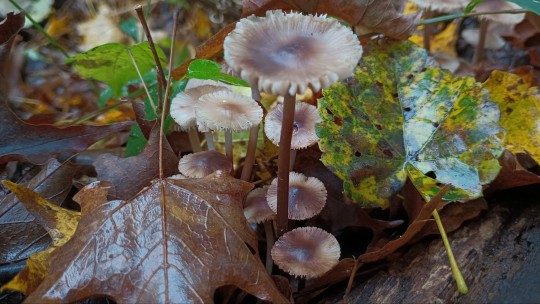
Found and photographed: on an appalachian mountain biking trail in West Virginia
ID by: me, as Common Bonnet
Also known as the "Rosy-Gill Fairy Helmet" these mushrooms are known for their "bonnet" hat look.
See more photos, and learn about Common Bonnets below the cut!


While pretty to look at, the insubstantial size and growth rate means they have not been heavily researched for medicinal or cooking uses.
However some field guides do suggest cooking them slowly in hot water to "weaken the toxins" and make a "strong soup". I personally would advise looking elsewhere for a foraged meal.
Edibility: Inedible (probably)
Rarity: very common
Genus: Mycena
Regions: widespread across the entire temperate zone of the northern hemisphere.
Please do your own research, I am an enthusiast not a scientist. I'm here to share and have fun.
All photos taken by me: Toast Loafley/Juno S.
0 notes
Text
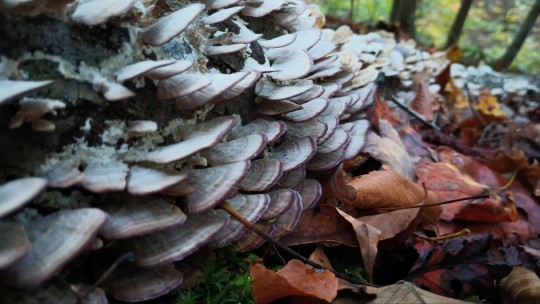
ID by: me, as Violet Toothed Polypore
Found and photographed: on an appalachian mountain biking trail in West Virginia
These mushrooms are practically everywhere, if you've ever been in a forest you've surely seen them. But you probably didn't know there's one place they avoid.
See more photos, and learn about Violet Toothed Polypores below the cut!


These mushrooms are one of our most prolific mushrooms around, but they can't grow everywhere. Specifically avoiding coniferous woods such as pines, spruce, and most evergreens.
The high acidity of evergreens keeps this specific species at bay, but a look alike "Trichaptum abietinum" thrives on conifers.
Edibility: Inedible
Rarity: Extremely Common
Genus: Trichaptum
Regions: Europe, Western Asia, Australia, North America, South America
Please do your own research, I am an enthusiast not a scientist. I'm here to share and have fun.
All photos taken by me: Toast Loafley/Juno S.
2 notes
·
View notes
Text
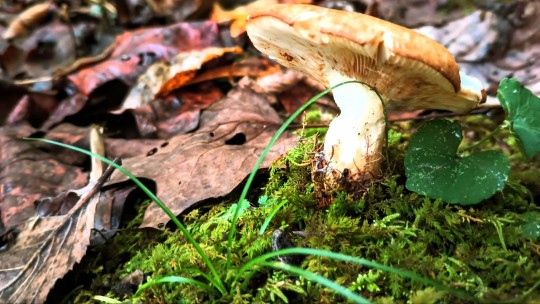
Found and photographed on an appalachian mountain biking trail in West Virginia
ID by: me, as Fishbiscuit Russula & Blacktailed Red Sheetweaver
This russula is named after its fishy smell, and there's even a bonus eight legged friend!
See more photos, and learn about Fishbiscuit Russulas and the Blacktailed Red Sheetweaver below the cut!

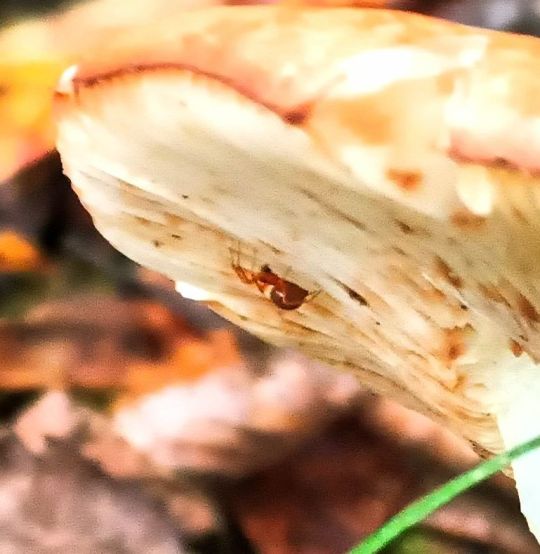

The "Russula Compacta" starts off white and browns over time as it bruises, ages, and/or dries. This process causes the mushroom to release a fishy smell that has described to "become more disagreeable with age"
But we're not just here for the mushroom, the"dwarf spider" here was an accidental bonus! These spiders live in low grass and underbrush, called a Sheetweaver because of its sheet-like web. They catch prey by creating a hard to see non-sticky two part web. When a bug flies into the vertical web section it's knocked out of flight, falling onto the horizontal eating platform where it quickly becomes lunch.
Thank you for reading! Theres an entire world under your feet, you just have to look.
Mushroom
Edibility: inedible
Rarity: common
Genus: Russula
Regions: Eastern North America
Spider
Rarity: common
Genus: Florinda (the only species of this genus)
Regions: USA, Mexico, & West Indies
Please do your own research, I am an enthusiast not a scientist. I'm here to share and have fun.
Mushroom photos by me: Toast Loafley/Juno S.
Sheet web photo from Wikipedia by: Kelton Welch
#mushrooms#wild fungi#fungi#photography#nature#nature photography#mushroom identification#spider#naturecore#ToastLoafley
0 notes
Text
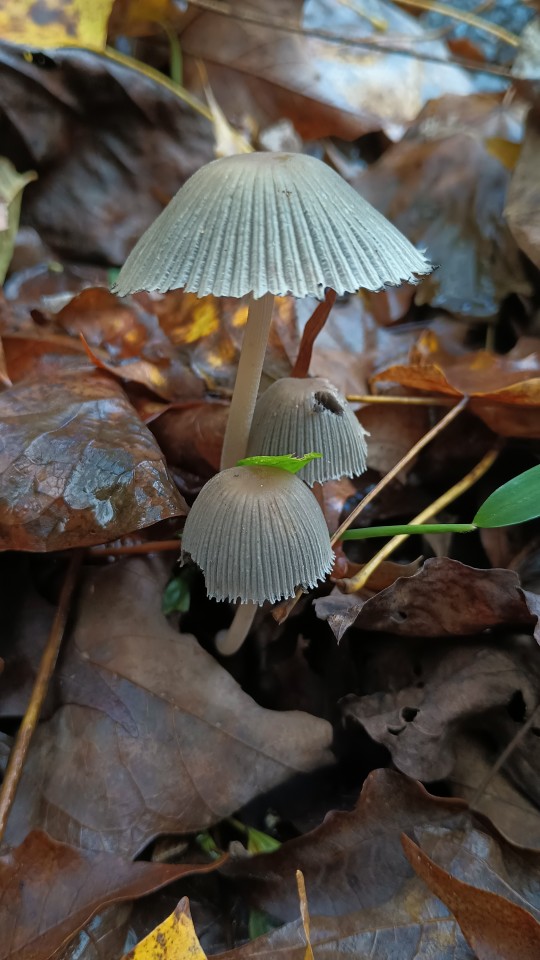
Found and photographed on a mountain biking trail in West Virginia
ID by, me: Pleated Inkcap
Life is fleeting, especially for this mushroom. It's body disappears in under 24 hours.
See more photos, and learn more about the pleated Inkcap below the cut!


The pleated Inkcap grows at night after rain, it has to spread its spores fast, and like a vampire this mushroom does not fare well in sunlight.
After sprouting, it grows to full size within hours releases its spores, then consumes itself. Quickly self decomposing to gather as much nutrients from its fruiting body as it can before the sun dries it out.
It's fruiting body short lived but beautiful, this fungi continues on strong through its mycelium underground, waiting patiently for the next rainfall.
Medicinal uses are unknown.
Edibility: inedible
Rarity: common
Genus: Parasola
Regions: Britain, Ireland, Mainland Europe, & North America
Please do your own research, I am an enthusiast not a scientist. I'm here to share and have fun.
All photographs taken by me:
Toast Loafley/Juno S.
#mushrooms#wild fungi#fungi#photography#nature#nature photography#mushroom identification#ToastLoafley
32 notes
·
View notes
Text

Found and Photographed at a Fungi Festival in Ohio.
I believe these are Oysterlings, more specifically Bitter oysterlings.
Learn more about them below the cut!
Growing on decaying wood, these mushrooms are very interesting with their bioluminescent properties. Glowing green for days (the green only visible in the dark)
Medicinally, bitter Oysterlings have been used in traditional Chinese medicine as a topical substance to stop bleeding, or ingested as a "violent purgative"
Edibility: inedible
Rarity: common
Genus: Panellus
Regions: East Asia, Australia, Europe, & North America
Please do your own research, I am an enthusiast not a scientist. I'm here to share and have fun.
All photographs taken by me: Toast Loafley/Juno S.
#mushrooms#wild fungi#fungi#ohio#photography#nature#nature photography#mushroom identification#medicinal plants#ToastLoafley
43 notes
·
View notes
Text

Mushroom for practice
6 notes
·
View notes
Text
i love you beginner artists. i love you inconsistent art styles. i love you artists without a clear aesthetic. i love you artists who dont post every single day. i love you visible imperfections. i love you works in progress. i love you ugly color palettes. i love you anime art. i love you OCs. i love you fanartists. i love you self inserts. i love you ship art. i love you furries. i love you artists who purely draw for fun.
14K notes
·
View notes
Text

Daily doodle, box turtle.
0 notes
Text

Black kitty practice!
1 note
·
View note
